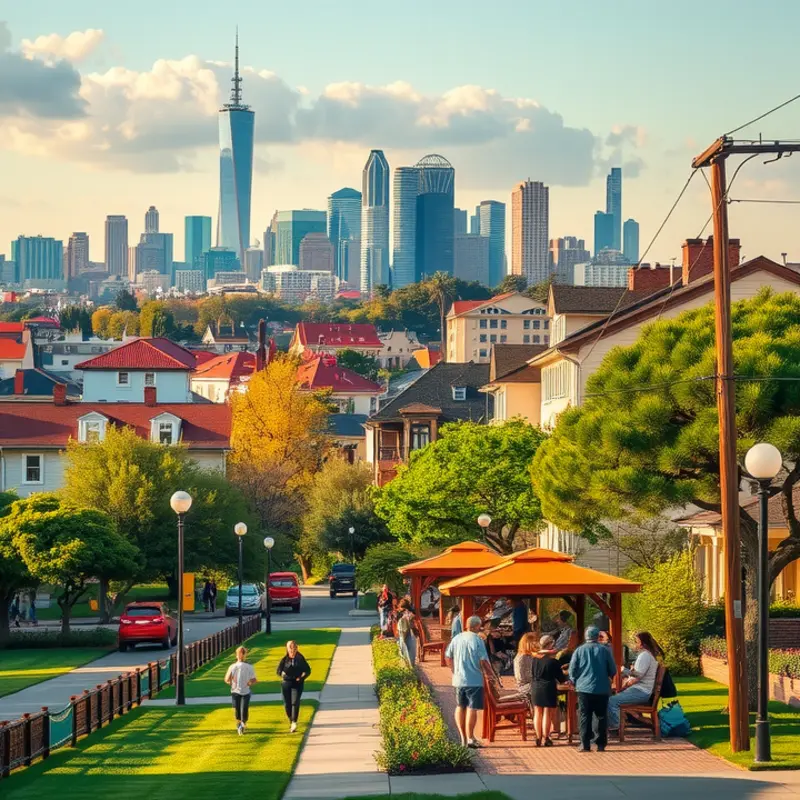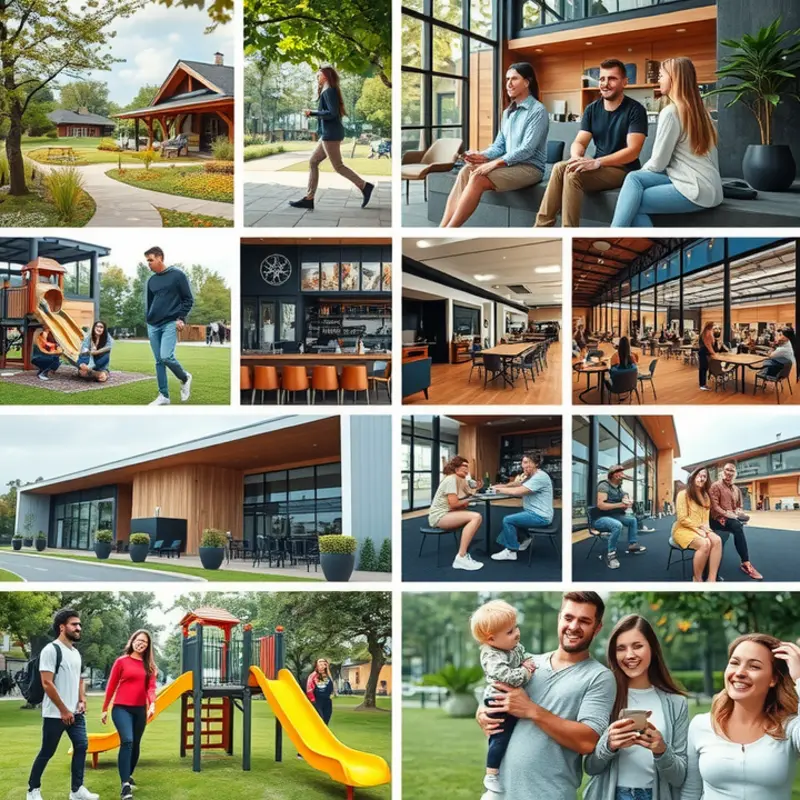Choosing the perfect neighborhood to rent in can feel like dating—there are so many options, and you just want to find your match! Whether you’re a fresh-faced graduate venturing into the world on your own, a couple seeking that cozy home for two, or a family in search of space and good schools, there’s a rental neighborhood out there just waiting for you. With the U.S. housing market presenting diverse options from urban jungles to suburban serenity, knowing what to look for can greatly enhance your living experience. This guide breaks down popular rental neighborhoods and what they offer, so you can find a place that feels just right. Buckle up as we dive into the world of leasing homes with an adventurous spirit and maybe a sprinkle of humor along the way!
City Living vs. Suburban Bliss: A Comparison

City living and suburban life each offer unique experiences shaped by amenities, commute times, and lifestyle preferences. Young adults, first-time renters, couples, and families often grapple with choosing between the energy of city neighborhoods and the serene charm of the suburbs. Let’s delve into these factors.
Amenities
City neighborhoods are renowned for their vibrant array of amenities. Whether it’s a local coffee shop, trendy restaurant, or bustling market, urban areas keep entertainment and dining options at your fingertips. The cultural scene, from art galleries to live music, often thrives, offering endless exploration for those who value proximity to exciting activities.
In contrast, suburban areas may boast fewer immediate amenities but typically make up for it with larger living spaces and access to parks and recreational facilities. For families, this often means more play areas and schools with spacious campuses. Young couples might appreciate the quieter environment, while families often enjoy the communal feeling and events characteristic of suburban life.
Commute Times
Living in the city usually means shorter commute times, especially for those working downtown. Public transport is more widely available, with buses, subway lines, and bike-sharing systems offering efficient travel. However, this convenience can come at a cost—urban congestion often leads to cramped spaces and parking challenges.
Suburban living generally means longer commutes, usually involving a car. Despite this, many find the trade-off worthwhile for the increase in living space and lower housing costs. Suburban infrastructure often supports smoother traffic flow, and newer public transit options are emerging, slowly bridging the gap.
Lifestyle Preferences
Urban areas pulse with life, offering a fast-paced environment that can energize young adults and those seeking constant stimulation. The diversity of cultures and activities in cities caters to eclectic tastes, from late-night eateries to day-long festivals.
Those who prefer a more relaxed pace might find suburban bliss more appealing. Suburbs offer an environment conducive to tranquil evenings and weekends spent on leisurely activities. Many families and couples prioritize the peace and security found in these neighborhoods, along with a greater sense of community.
For first-time renters, determining the ideal setting involves weighing priorities. Young adults might prioritize nightlife and networking opportunities in cities. Conversely, future families might focus on suburban properties for the extra bedrooms and yards.
Assessing which setting aligns best with your lifestyle involves considering multiple dimensions. For more insights on how to make your rental feel like home, consider exploring decor ideas and DIY tips. Understanding your daily needs will help guide your decision toward the environment that best suits your vibe.
Finding Your Niche: Amenities and Lifestyle

When choosing a neighborhood, amenities are a vital component of your decision. Imagine unwinding after a long day at a rooftop pool, taking in the cityscape with a craft cocktail in hand. This dream is a reality in some urban areas, where luxury amenities cater to a diverse crowd. These neighborhoods often feature fitness centers, co-working spaces, and communal lounges, ideal for those seeking convenience and community engagement.
For others, proximity to coffee shops offering artisanal lattes and creative brunch menus is paramount. In bustling areas with vibrant social scenes, such local hangouts serve as community hubs, fostering connections over a steaming cup or delicious meal. These locales are designed for those who savor every sip, valuing quality and an enriching atmosphere.
Families often prioritize access to parks and playgrounds, ensuring that children have ample space for play and exploration. Green areas also provide a respite for adults, encouraging outdoor activities and a sense of connection to nature. Neighborhoods with such amenities offer a balanced blend of convenience and relaxation, fostering an environment where families can thrive.
Reliable public transport is often the linchpin of effective neighborhood choice. Easy access to buses, trains, and bike lanes can transform daily commutes and enhance your urban living experience. In cities where public transport is robust, residents enjoy reduced reliance on personal vehicles, saving time and promoting environmentally friendly practices.
Amenities must align with your lifestyle and values. For those with pets, neighborhoods that offer dog parks and pet-friendly establishments are essential. These areas provide not only for your leisure but also prioritize the happiness and health of your furry companions, creating a more inclusive community spirit.
It’s crucial to find a home that supports your activities and hobbies. Are you an art lover or a fitness enthusiast? Look for communities with galleries, studios, or gyms nearby. Picking a rental area with resources for your personal and recreational interests greatly enhances your daily life, making your neighborhood feel like an extension of your home.
For those moving to or within large urban areas, examining neighborhood walkability can be invaluable. A high walkability score can dramatically improve access to amenities and bolster your overall wellness by encouraging physical activity. To understand how walkability can affect your lifestyle, consider using a walkability score guide.
In essence, every neighborhood has its unique character, shaped by the amenities it offers. Whether you crave the hustle of an urban center with rooftops and cafes, or the tranquility of suburban parks and playgrounds, the key is aligning these features with your desired way of life. By focusing on the amenities that matter most, you can find a neighborhood that truly feels like home.
Final words
Finding the right rental neighborhood doesn’t have to be a stressful quest; instead, it can be a delightful dive into choice. By evaluating what each area offers—whether amazing nightlife, family-friendly parks, or quiet streets ideal for peaceful evenings—you’ll be one step closer to that rental home that feels just right for you. Remember to prioritize your needs, gather some local gossip (maybe a little less than the juicy kind), and consider those amenities that can turn a house into a home. The perfect place is out there, just waiting for you to knock on its door!









